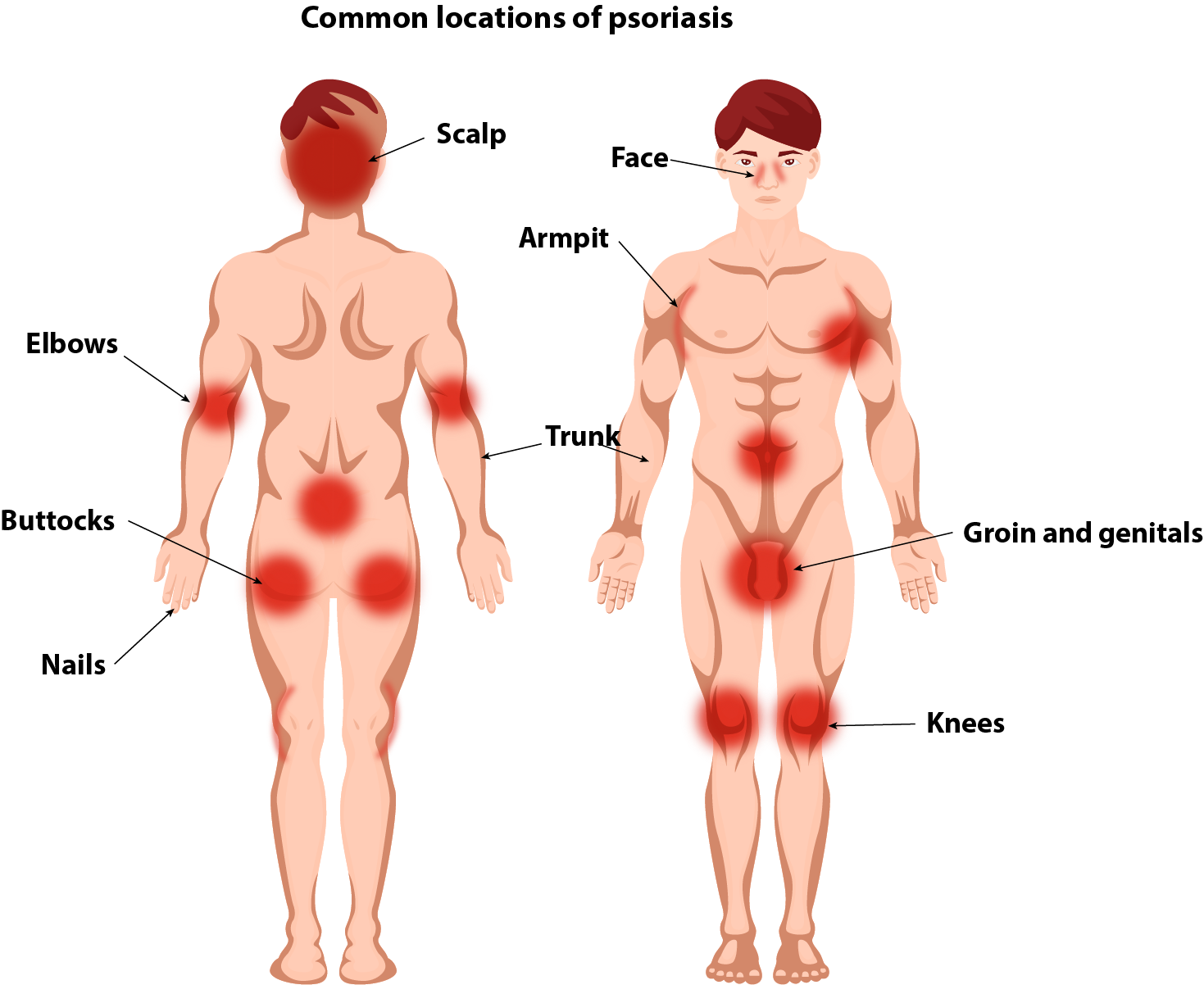Plaque Psoriasis

Plaque psoriasis (or) Psoriasis vulgaris is the most common form of psoriasis found in 80-90% of the patients. This occurs when an overactive immune system speeds up the growth of skin cells causing reddish plaques which become itchy and painful. The areas most commonly affected are the lower extremities, followed by the elbow, scalp, knee and face.1
Stages:
Depending upon the extent of involvement, it is grouped under three degrees:
• MILD = < 3 % BSA involvement
• MODERATE = 3- 10% BSA involvement
• SEVERE = > 10% BSA involvement
(BSA- Body surface area)
Diagnosis:
The diagnosis is clinical and reddish patches on the skin with silvery scales are characteristic of the disease.2 In some rare cases, a skin biopsy may be needed to confirm the diagnosis.
Reference:
- Farber EM, Nall L. The natural history of psoriasis in 5,600 patients. Dermatology. 1974;148(1):1-8
- Kim WB, Jerome D, Yeung J. Diagnosis and management of psoriasis. Canadian Family Physician. 2017 Apr 1;63(4):278-85.